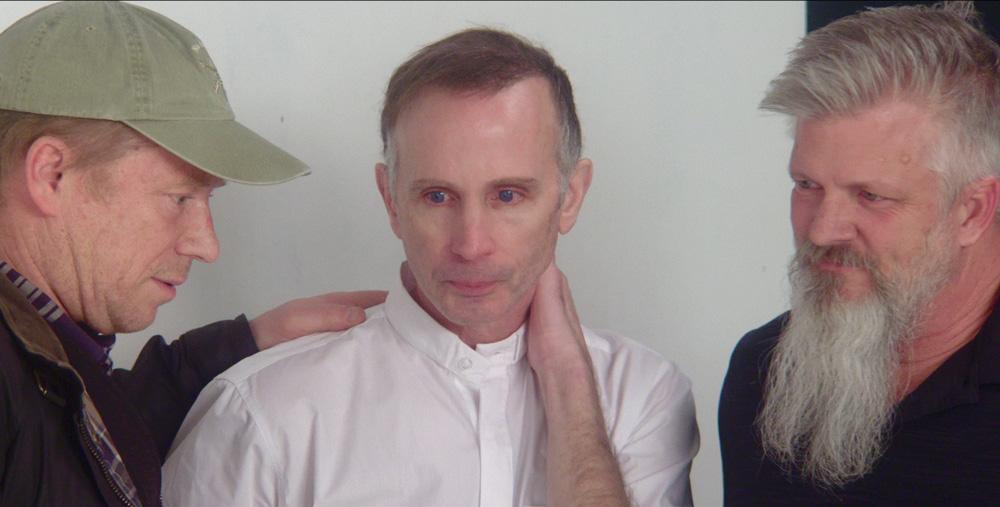There was a moment on “Procession” when Rebecca Randles wasn’t sure if it would be a good idea a good idea to film, though it wasn’t for any reason you might think, given the film’s focus on six survivors of sexual abuse at the hands of the Catholic Church when they were young boys. Randles, the Kansas City attorney who had taken up their case, was in the process of moving offices, and suspected it wouldn’t be too interesting to see all her files moved from one place to another, but Robert Greene had other ideas.
“I’m like, “Rebecca, that’s a very powerful image. What if the guys helped you move those boxes?” and she was like, “Oh, I could use the help certainly,” recalls Greene, of what would become one of the most unexpectedly powerful scenes in the film as a garage door rises to reveal the stacks of boxes of sexual abuse cases that she’s taken on over the years.“So what started as an ‘I’m not sure I can help’ becomes this powerful image of the work that she’s done and then this beautiful image of the guys helping her move forward. ‘Procession’ the word means moving forward, and there’s so many versions of moving forward [in the film].”
In fact, “Procession” feels as if it’s the film that Greene himself has been building towards his entire career, building a community of collaborators over time that have mitigated the risky endeavors he’s embarked on with their skill and sensitivity and interrogating the process of making nonfiction films that is inherently contrived from the moment a camera is set up in a certain position yet nonetheless is expected to reveal truth. Greene has split the difference with films such as “Bisbee ’17” where he involved an entire community in New Mexico in reenacting one of the ugliest chapters in their history, and “Kate Plays Christine,” following the research process of Kate Lyn Sheil as she prepared herself to play the news anchor Christine Chubbuck who took her life on air, and in “Procession,” the method is reversed to some degree in enlisting Joe Eldred, Mike Foreman, Ed Gavagan, Dan Laurine, Michael Sandridge, and Tom Viviano to create scenes for a film that aren’t so much reinterpretations of their own experiences as much as a way to give control back over their own narrative.
Although the men seize the opportunity to make a film on their own terms, “Procession” does require them to step foot back into the church that brings back such painful memories and along with Randles, drama therapist Monica Phinney and the therapist Sasha Sanders all on hand to help guide them through their collective grief, the exercise of making a film together from scouting locations to deciding the framing of shots doesn’t only reassert the fact that their voices have tremendous value individually but that they need not feel as if they should be going through such suffering alone. A deeply powerful film that became a sensation at its recent premiere at Telluride, “Procession” was picked up by Netflix and stands to move audiences the world over upon its release this week and shortly before, Greene generously spoke about how he was inspired to take on this story and build such a safe and inviting environment for all involved to bring their ideas to it.
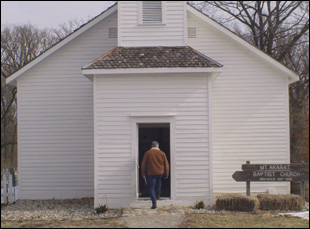
Certainly. The entire film comes out of a little bit of a crisis that was created when someone asked me at a screening of “Bisbee ’17,” did you have a therapist there? And I didn’t have a good answer. I danced around it a little bit and then it was really like, “Well, what’s the point of these movies? Why would someone ask me that?” And the point is, I think, that if you aren’t trying to move the lives of the people onscreen forward then I don’t know why I’m making films. Filming someone and just depicting their story is no longer enough, so there was a lot more that went into this emotionally. And what I do know is that the person who cast the film is Rebecca Randles, the lawyer you see in the film. She had a lot of wisdom that she imparted on me and she cast the guys because these were the six guys that A, she thought could get something out of it and B, could get through it. It turns out that it’s also six guys that most wanted to help other people by having these images being created, so knowing that’s where they were coming from, we were able to activate all that as much as possible.
The reason why they were traumatized was because power was taken away from them. In a system of power. The Catholic Church is a system of power. It’s the clearest way to understand what that church is doing and if power is taken away, the way to reaffirm life and alleviate some of the shame is to give power. And Rebecca said, “Look, as long as you listen to them, as long as you ask questions, you don’t tell them what you want them to do, you ask them what they want to do, as long as every step of the way in the process you are giving power, then you have a chance to actually do the help you want to do.” So there was a lot more to navigate and one of the biggest parts of the film is that doubt and skepticism has to be a part of that process. We were confident starting it because we had Rebecca and Sasha, another therapist who was involved, and we had this system that we created that was very safe. There were family members that were all brought in, but we needed to also know that doubt and concern was always going to be a part of everything we were doing.
When the drama therapy process is something you’ve been working into your films informally, was it interesting to see how it worked when there were professionals like Monica involved?
Let me be clear – we didn’t do drama therapy in the film, but it’s a drama therapy-inspired process and the reason why Monica was there is because I absolutely realized all my other films were drama therapy-inspired processes too and I didn’t know it, so one of the big things I’d love to come out of this film is I’d love other documentary filmmakers to realize they could work with therapists directly — all kinds of trauma-trained individuals, but specifically anyone making documentary films should be thinking about the ideas of drama therapy, which is how powerful the process of someone being filmed can be. There’s so many times in filmmaking where somebody will say, “Oh that was so therapeutic for me,” and guess what? I’m not a trained therapist, so there’s something very serious that needs to be addressed there, and really Monica’s role as much as anything was helping me to navigate how to work through this.
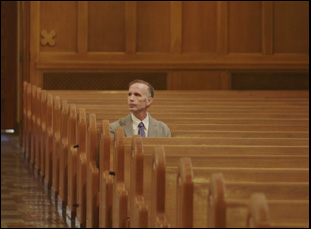
The way I’m directing is absolutely driven by what I need and I know I want in the edit and one of the things I always tell the director of photography that I’m working with, whoever’s holding the camera, I always say, “Listening shots are twice as important as talking shots.” You need double the amount of listening shots as you do talking shots and that’s just from studying the work of Frederick Wiseman, the master of the listening shot as a place for meaning. It’s literally not just someone listening, it’s someone thinking and someone taking something in and you can really produce meaning and a sense of empathy — all these feelings from watching people take in information. That’s a more granular answer, but more broadly speaking, the coming together was the whole point. One of the things about the first meeting when they all sat in a room together, we knew that if that was the only thing we filmed, that was helpful because Ed says it very clearly in the film, they just have never been around so many survivors of this kind of abuse and just the sheer power of not feeling alone in that space was crucial and was our first step forward.
Since Dan wasn’t one of the initial people in the press conference, what was it like finding out he was a locations manager? That seems to have opened the film up when you’re driving from place to place with him.
It’s a little bit inverse from that actually. Rebecca said, “Well, I know who could do the locations. He’s actually a survivor and his name is Dan.” And Dan is one of the most deeply connected individuals in the world of Kansas City film. He does everything, he knows everybody, he opens all the doors. He’s really brilliant at what he does and he was like, “Yeah, I want to help with that film certainly.” But the conversation then was, “Well, do you want to be in it?” That was a lot harder for Dan, and continues to be. The process of this film is still unfolding, and we’re still working together on all these things, but Dan’s whole thing is “I don’t want to make it about me. I want to help other people.” That’s what he does. He says it in the film — or Michael actually says it — “You help others in a way you can’t help yourself.” So it’s been our goal, and I’m saying this hopefully he’ll read this because now Stephen, you’re part of the therapeutic process now. I want him to read this and to hear this that we want you to get something out of this. Not just you helping other people. And going back to the editing question, one of the most powerful things I know as the editor is I know I’m going to be able to edit Dan’s scenes in such a way that he’ll then be able to watch himself be a literal actual hero. That’s the power of filmmaking, right? I can make him see what we all see.
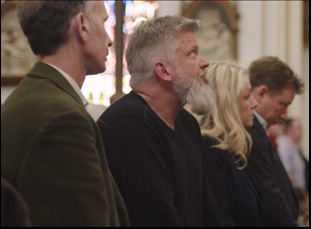
We didn’t show footage throughout — I showed shots occasionally and during and we talked a lot about it, but the guys were absolutely a part and they saw several cuts. We showed them a very, very early edit of the film, which was very long and started the sometimes painful, almost always illuminating process of showing them edits of the film and working towards something. so Mike, the angrier fella in the film and one of my favorite human beings alive, he really, really disliked the first cut. There were certain things he just didn’t understand. He didn’t understand the framing of things and as a lot of survivors are, he’s incredibly careful with his own words and maybe I just used different words than he wanted to use. We talked about it and sometimes he was completely right. Sometimes I had to say, “Well, this is why I did that” and slowly we worked towards it. Mike probably watched the film maybe 30, 40 times and by the end of the process, he was suggesting edits to his own scenes to help make the film work better, so that journey was part of what we did. We really wanted the guys to feel like they have ownership over what’s in the film, so Mike watched it 30, 40 times and Dan watched it twice before it was done. Now he’s seen it a few times in theaters – he was at the premiere – but they all have various ways that they want to handle watching it and that’s certainly up to them.
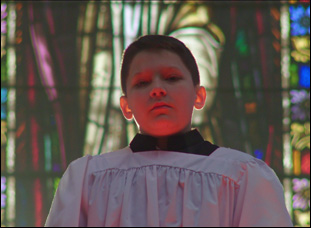
That’s a kind question because the film premiered six weeks ago, going on two months ago now and it seems like such a lightning fast rollout. When Netflix stepped in and said they want to have the film, we were almost vaguely expecting like, “Oh, we’ll put it out some time in the next year.” And they’re like, “No, we want to come out now. Let’s do it.” So that’s been incredibly rewarding and powerful and I’m zig-zagging across the country to show the film and talk about it, and in some ways, it’s a wonderful antidote to what happened because the pandemic shut down our process. Imagine being these guys and you’ve been lied to, everything’s been delayed – Michael’s been waiting for years to have his abuser kicked out of the church and it was just delayed and delayed and delayed. Then we come along and as the film crew, we earn their trust, we work together, we do all this work and we have one thing left to film and then it all gets shut down. It then becomes a year-long process of a whole other kind of therapy, which is stay calm, like “we’re going to get through this,” and then Telluride happens and boom, boom, boom, I just got a text from Mike [today where] he’s like, “Did you see the article in the Kansas City magazine? It’s happening. It’s finally happening.” And he’s getting his story out there in the way that he dreamt of. So for us, this very quick [turnaround] process is a big fix for the painful delay we had to go through and the delays that they’ve had to go through for their entire lives.
“Procession” will open theatrically on November 19th in Los Angeles at the Laemmle Glendale and in Berkeley at Landmark Shattuck.




